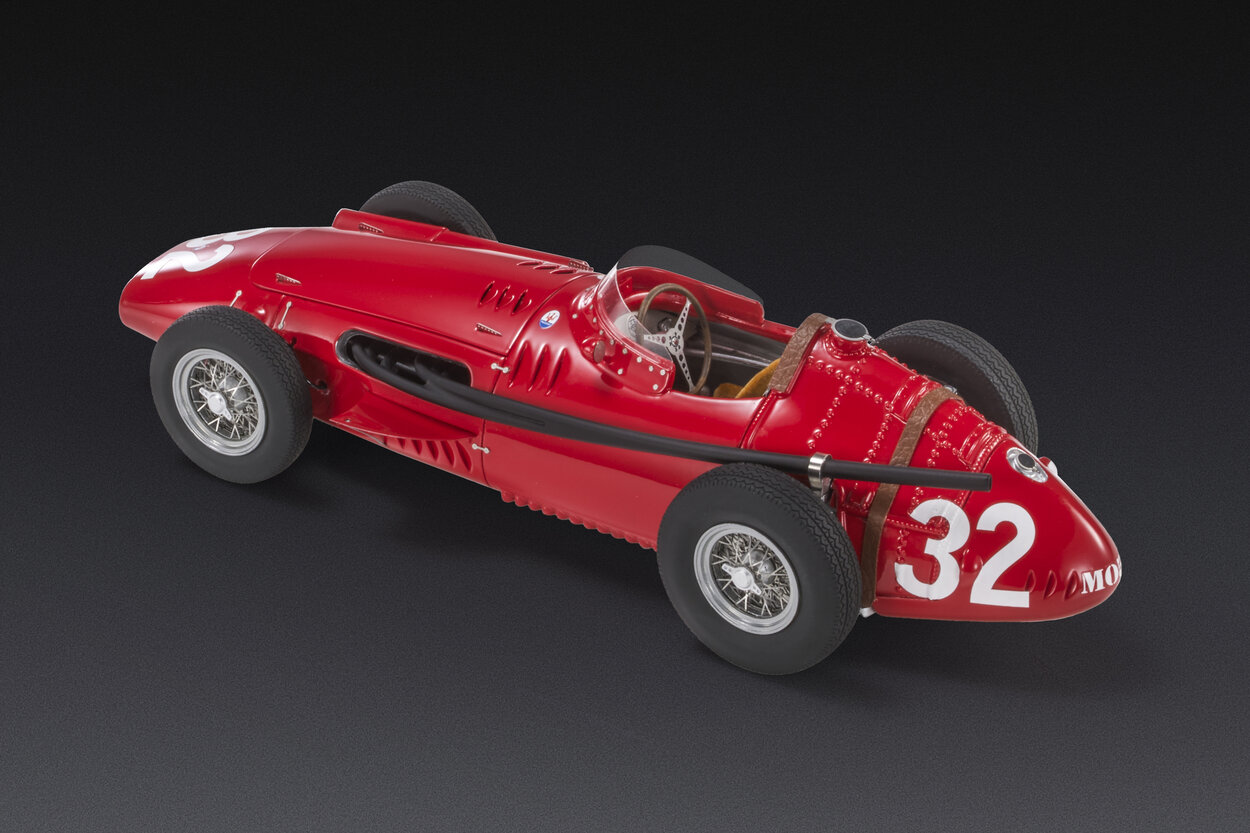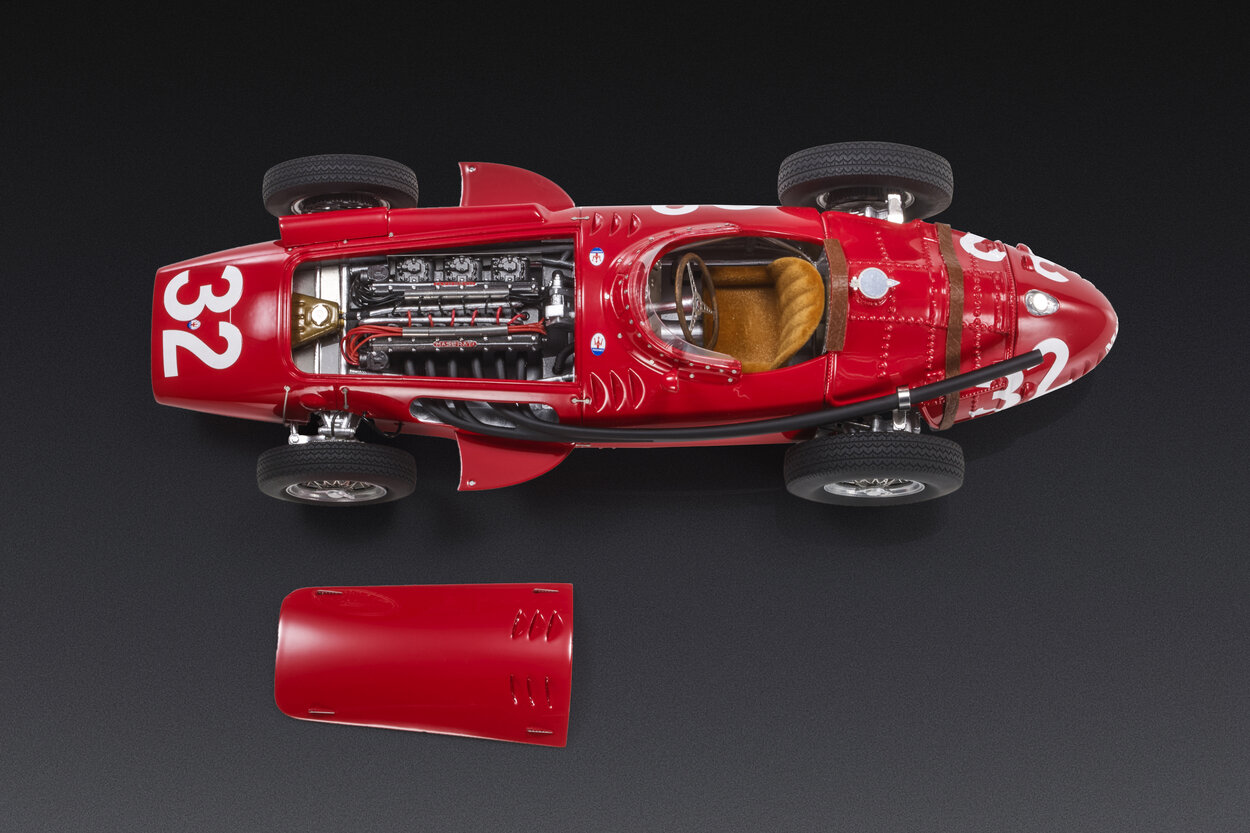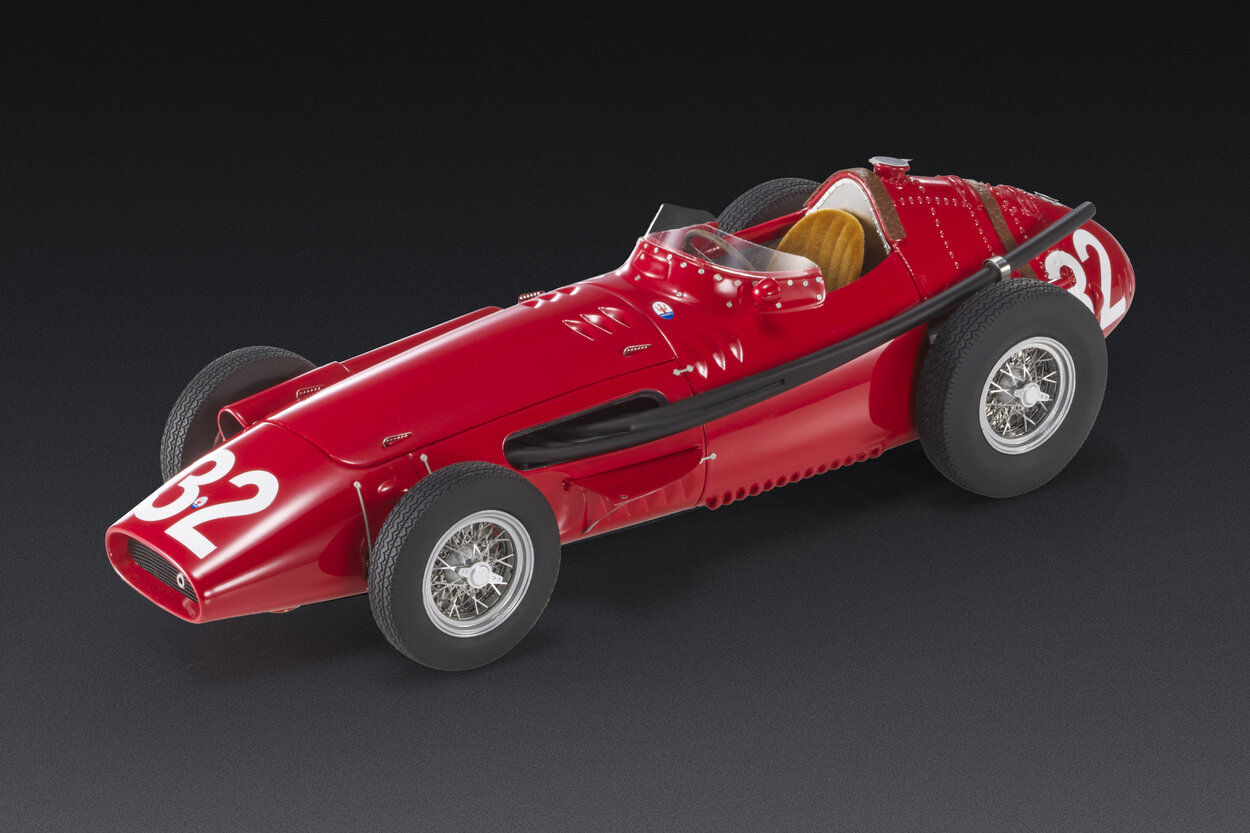Maserati 250F
It is one of the most iconic cars in the history of the Formula 1 World Championship and one of the longest-lived. For Stirling Moss, it is the best car he has ever raced. For Juan Manuel Fangio, it is the car of his fifth and final world title.
The story of the 250F begins in 1954 when Fangio brings it to its debut and its first victory in the Argentine Grand Prix. Fangio drives it because the Mercedes W196R, with which he is supposed to compete in the world championship, is not yet ready.
The 250F is born in the Maserati workshops on Viale Ciro Menotti in Modena. It is built around a 6-cylinder engine of 2493 cm3, producing 240 hp. The project involves the legendary engineer with Alfa Romeo background and extensive experience in Ferrari, Gioacchino Colombo, along with Vittorio Bellentani, Alberto Massimino, and Valerio Colotti. A particular feature of the engine is the wet cylinder liners in the upper section and dry in the lower.

Drivers:
Juan Manuel Fangio: The Argentine pilot clinches the 1957 World Championship title with four victories achieved at the wheel of the 250F in the Grand Prix races of Argentina, Monaco, France, and Germany. Legendary is the victory obtained at the Nürburgring on August 4, 1958, after which Fangio declares that he drove in a state of grace, entirely supported by his Maserati. At the end of the season, he becomes world champion for the fifth time. His last race, the 1958 French Grand Prix, will be behind the wheel of a 250F.
Stirling Moss: In 1957, Moss races for Vanwall, but he competes in the first Grand Prix of the season, in Buenos Aires, at the wheel of the 250F, with which, the previous year, he won the Monaco and Italian Grand Prix.
Jean Behra: The French driver earns the second step of the podium in the Argentine Grand Prix. The rest of the season is below par, and Behra has to settle for two sixth places in France and Great Britain.
Our model cars:

Despite the 250F’s relatively spacious cockpit, the driver had to straddle the transmission tunnel, with the accelerator pedal in the center, brake on the right, and clutch on the left. The driver’s right hand was suspended over a small lever that operated a four-speed gearbox, and the steering wheel was large and wooden-rimmed.
In four seasons, the 250F won eight Grand Prix and one world championship. With the two victories it achieves in 1954, the 250F also contributes to Fangio’s 1954 title.

